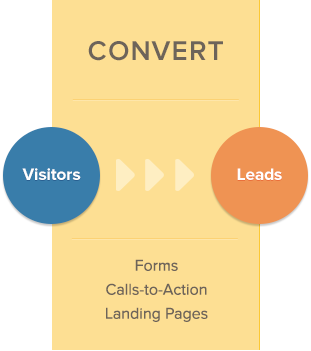The 7 Steps to Inbound Marketing Success: Step 3 Distribute
Over the past few weeks we have been taking a look at each of the 7 steps in the lead generation process that we use to help clients navigate and...
 If you are doing inbound marketing and content marketing the right way, you are spending almost as much time analyzing your leads, reviewing traffic sources and making refinements as you are actually producing and distributing content. Over the past few weeks we have been taking a look at each of the steps in the 7-Step Lead Generation Process that LeadG2 uses to help clients navigate and embrace an inbound marketing culture. We hope that by detailing each step in the process it can help clarify the steps needed for inbound marketing success.
If you are doing inbound marketing and content marketing the right way, you are spending almost as much time analyzing your leads, reviewing traffic sources and making refinements as you are actually producing and distributing content. Over the past few weeks we have been taking a look at each of the steps in the 7-Step Lead Generation Process that LeadG2 uses to help clients navigate and embrace an inbound marketing culture. We hope that by detailing each step in the process it can help clarify the steps needed for inbound marketing success.
In a few of our recent blog posts we outlined the first 4 steps in the 7 Steps to Inbound Marketing Success:
Each of these steps in the 7-Step Lead Generation Process are extremely important to the overall success of your inbound marketing efforts and all somewhat self explanatory. Step 5 - Analyze, however, is one of the step that companies continue to miss, which leads to continuing down the wrong path or not taking corrective action soon enough.
One of the greatest feelings for an inbound marketer is when leads start converting and you start to hear that sales is getting close to closing on a few inbound leads. While some might start thinking about popping the champagne cork and celebrating those early wins, it’s probably best to hold off for awhile until you make sure that you have the formula dialed in and you have optimized everything that you can.
This is where the analyze phase begins and the fun starts… well, fun if you are a quantitative person like I am and enjoy this type of thing. To conduct a thorough analysis of your inbound marketing activities each month I put together a list of 5 Metrics and Items to Analyze Each Month that should help with the task of determining how well you are doing.
The first thing you need to do in terms of analysis is to look at your sources of traffic from a historic basis (to your website and to your specific landing pages) and determine if there are areas for improvement or concern. Looking at your traffic from a historic basis can help with understanding your long term trends and isolating any seasonal or short term issues.
Areas of improvement for website traffic include sources of traffic that either have little traffic, have low traffic to contact rates (low conversions) or are not growing month over month. Even if you see large increases in overall traffic it’s best not to just stop there and determine that all is good…. you need to dig a little deeper and determine the causes for these increases so you can possibly replicate this in the future. The same with the decreases… you want to know why the traffic has decreased so you can do something about it.
A good rule of thumb is that each source of traffic; organic, direct, social, referral, paid and direct should for the most part be growing and increase every month or you should have a valid reason for lack of growth or inactivity. For instance, if you are seeing your social media traffic decrease from month to month it’s important to dig a little deeper and determine the cause. Did you stop publishing to Google+ for a few weeks or did your social media tool disconnect from HubSpot and you stopped auto publishing? Finding the answers to each of these monthly swings can help with making sure you are seeing progress in the right direction.
For most inbound efforts, decreases in traffic are usually accompanied by a decrease in content production during that month (publishing fewer blog posts) or other factors that are predictable. For instance, if you are publishing an email newsletter to your marketing database on a quarterly basis, you should see increases in email traffic during the month you publish. Once you know the impact that it will have on traffic and leads you can factor that in each month when reviewing your results.
This is a rather obvious analysis that you would want to conduct on a monthly basis and discuss between sales and marketing. Are leads increasing from previous months or are they decreasing? To determine the reasoning for this you often have to go back to your source reports and see if you received enough traffic and then check your conversion rates. If you receive the same traffic each month and your conversion rate is the same you should have the same number of leads. So something must have changed in one of those two areas to impact the overall number of leads. Reviewing your traffic and conversion rates by source can help give you the answers.
Besides measuring the total number leads during this analysis you also want to measure the number of marketing qualified leads (MQLs) vs previous months as well as sales qualified leads (SQLs) vs previous months. This will help you gauge the quality of your lead flow and help you determine if you need to adjust the questions you are asking on forms to get better leads or make other adjustments.
Sometimes a decrease in leads can also be attributed to a decrease in publishing blog posts or new offers. If you are not bringing new prospects to your website and showing them something new that they are interested in, your leads can dry up rather quickly. Creating a new marketing campaign or call to actions on your website can help increase leads each month.
As we talked about in the section with analyzing overall lead counts it’s important to look at the sources for each lead and to review how each landing page is doing. If you have several underperforming landing pages (whether based upon your own performance or industry benchmarks) this is where you want to focus your efforts on increasing conversions. It’s also important that you find the top performing landing pages and make sure that you continue to promote them. If these are truly your best sources of leads you want to make sure that you have steady traffic to them from new campaigns. You want to make the underperforming landing pages and convert better and you want to drive more traffic to your performing pages.
A good way to analyze conversion rates is to do some A/B testing of creating, copywriting and even the form prospects fill out. But remember, only test one component at a time so you can know what the real impact is of your changes.
Digging into the content that visitors are finding most useful or interesting on your website is something that should be done on a monthly basis. If you know what your top 10 visited pages are you can analyze each of those to make sure that you have optimized them for SEO and the keywords you are targeting as well as make sure they have some type of call to action on them. One of the biggest mistakes that we see is companies with high performing pages of their sites not having any visible call to action on them.
Another benefit of regularly reviewing page performance is to gauge what your visitors interests are and providing more of it. You can also review the conversion path and making sure that your visitors are seeing the right pages in order to becoming new clients.
As you can see by the number of things you should be analyzing on a monthly basis that skipping step five shouldn’t be an option. Analyzing your performance on a monthly basis and making changes can only improve the quality of your content, user experience and ultimately increase the number of leads you are receiving.
The next step in the 7-Step Lead Generation Process - Cultivate, deals a lot with marketing automation and what to do with prospects that aren’t yet ready to buy and you aren’t quite ready to give up on them. Look for our next post about cultivating leads.
Over the past few weeks we have been taking a look at each of the 7 steps in the lead generation process that we use to help clients navigate and...

Our inbound marketing practice is booming. Why? One reason may be that we eat our own dog food. As we work with each client, we follow our own 7-step...

It’s so tempting to jump right into inbound marketing as soon as you realize how much it can do for your business. But before you get to the fun...